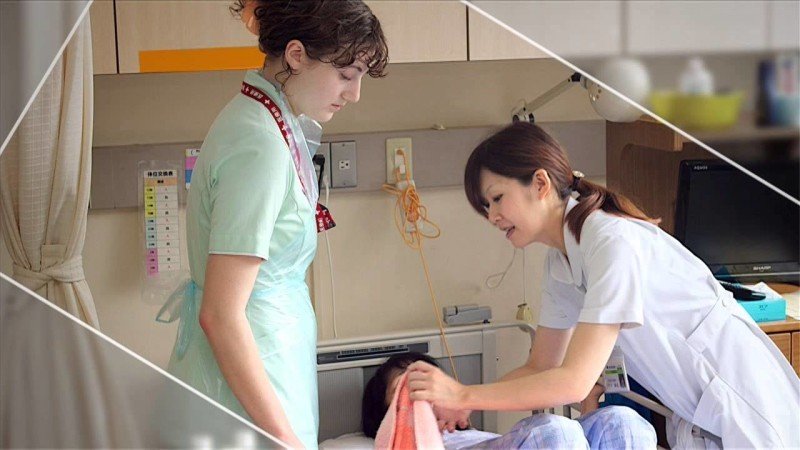We are living in the so-called Industry 4.0, a term used to define what the market classifies as “the fourth industrial revolution”. It is a time dominated by several technological advances, which have been causing transformations in all sectors of the labor market and, consequently, in our lives.
Industry 4.0 can be summarized in technologies and resources such as artificial intelligence, process automation, machine learning, big data, etc. Although each of these factors has a different purpose, they all work together to optimize various factors in our daily lives. In the health sector, it is no different, and the Covid-19 pandemic only reinforced that these advances are here to stay.
In this scenario, Japan is one of the countries that stand out the most. For more than a decade, the nation occupies a prominent position in the various rankings that classify the best health systems in the world (such as those published in Newsweek and The Lancet magazines). Among 169 countries, Japan is in 11th position, with 89 points (out of 100), also being the best in the Asian continent.
Much of this is due to investments made in health-oriented technology. Japan is also one of the countries that invest the most in technological innovations around the globe, occupying the 13th position in the Global Innovation Index 2022, calculated by the World Intellectual Property Organization (WIPO). All these factors, combined with policies that encourage healthy living, make the country one of the nations with the longest lifespan in the world.
Next, let's better understand what are some of the main Japanese innovations that are already in the testing phase and promise to change health around the world.
We recommend reading: Healthcare and Hospitals in Japan
Índice de Conteúdo
remote service
Since the beginning of the Covid-19 pandemic, remote care, through telemedicine, has become a fixed modality worldwide, including in Brazil. The patient's contact with health professionals, through videoconferences, proved to be feasible to streamline the flow of patients and also ensure broader access to health services, since it is not necessary to travel to a care unit to be attended.
In Japan, this is a practice that is already way ahead of the rest of the world. Starting with the democratization of the health system, which, even with the social inequality that plagues the country, still guarantees that everyone has equal access to the services provided to the population. This also includes the portion that lives in rural areas, far from urban centers and with low access to the most modern technologies.
Thanks to the popularization of 5G in the country, even people who live in isolation receive remote care, something especially useful for the elderly population, which is becoming increasingly prevalent in the country. Another Japanese system that has already been used in some European countries is the so-called Intelligent Health Screening, which aims to monitor the health status of children from pregnancy onwards.
The technology allows health professionals to keep track of the records of all the most basic exams of the pregnant woman, and, after the baby is born, the software carries out a survey on the most important points related to nutrition, development, etc. In this way, doctors can more easily identify what deserves more attention and, if necessary, initiate treatments before new complications arise.

robotics in nursing
Japan is one of the world leaders in robotics-oriented innovations, being the country closest to making reality something we only usually see in science fiction stories. Currently, one of the highlights of the category is the care robots, developed specifically to play the role of a nurse and assist in the routine of the elderly.
The initiative stemmed from the lack of qualified professionals in the area, a shortage that has been increasing with the constant increase in the elderly population in the country. Currently, a quarter of the Japanese population is elderly, and, due to the high cost of these technologies for personal use, the solution has been applied in nursing homes. The market is still taking its first steps, but more than 5,000 care homes already have this technology.
The robots are built with a human-like anatomy, with arms and legs strong enough to help seniors get up and move around. At the Shintomi nursing clinic, located in Tokyo, this type of technology is already well established in the care routine of people of all ages. The Pepper robot is one of the highlights, being responsible for promoting physical and dynamic group activities, among other functions.
Animal robots are also popular, both among children and the elderly. There are two different models: Paro is a baby seal intended for children, being able to react to touch and sounds, manifesting different reactions when he is petted or talked to. Aibo, on the other hand, is a puppy with similar functions, but more used as a “pet” for elderly people.
Read also: 25 Japanese Car Brands

Innovative equipment
Not limited only to nurse robots, Japanese clinics and hospitals also have a variety of state-of-the-art equipment, which takes the usability of simple utensils to another level. In this case, it is up to health professionals to use them in their work routine, being developed specifically to assist in human activity.
Some of the highlights are the multipurpose bed, capable of being divided into two and transforming one of its parts into a wheelchair. Nurses also use lumbar support equipment that responds to the body's bioelectric signals and helps move patients more easily and safely. As for bedridden people, there are advanced monitoring systems that can even identify bowel movements, sending alerts when the patient needs hygiene-oriented care.
These are just a few examples of how technology has helped health professionals in Japan, from nurses to graduates. All areas and specialties of medicine have been benefiting from such innovations, being a growing and increasingly exploited market. The tendency is for these resources to gradually reach other parts of the world, so we can expect that, in the near future, more countries will be able to take advantage of these technologies.





